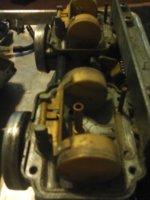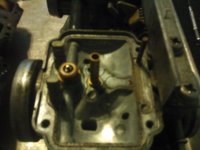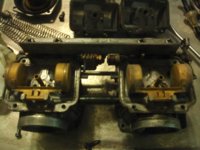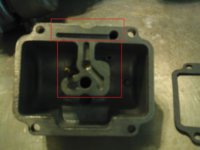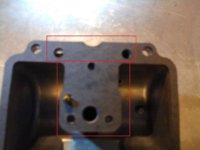Yes, that is the proper float setting for your carbs. When checking, measure from both sides. Many times the floats are twisted or tweaked and one side will sit different than the other. You want them the same so the float is sitting level.
Another method some use for leak detection is to use a propane torch, unlit of course. Hold it up to and move it around the rubber intake manifold with the gas (propane) turned on. If you have leaks, some propane will get sucked in and the RPMs will change.
Yes, the advance should snap back smartly on it's own. That one in the video is sticking and needs to be serviced. This is a common problem on these bikes. Many of the units haven't been touched since they left the factory. Besides cleaning and lubing the advance unit, you need to pull the advance rod out and clean and lube that too.
Another method some use for leak detection is to use a propane torch, unlit of course. Hold it up to and move it around the rubber intake manifold with the gas (propane) turned on. If you have leaks, some propane will get sucked in and the RPMs will change.
Yes, the advance should snap back smartly on it's own. That one in the video is sticking and needs to be serviced. This is a common problem on these bikes. Many of the units haven't been touched since they left the factory. Besides cleaning and lubing the advance unit, you need to pull the advance rod out and clean and lube that too.

